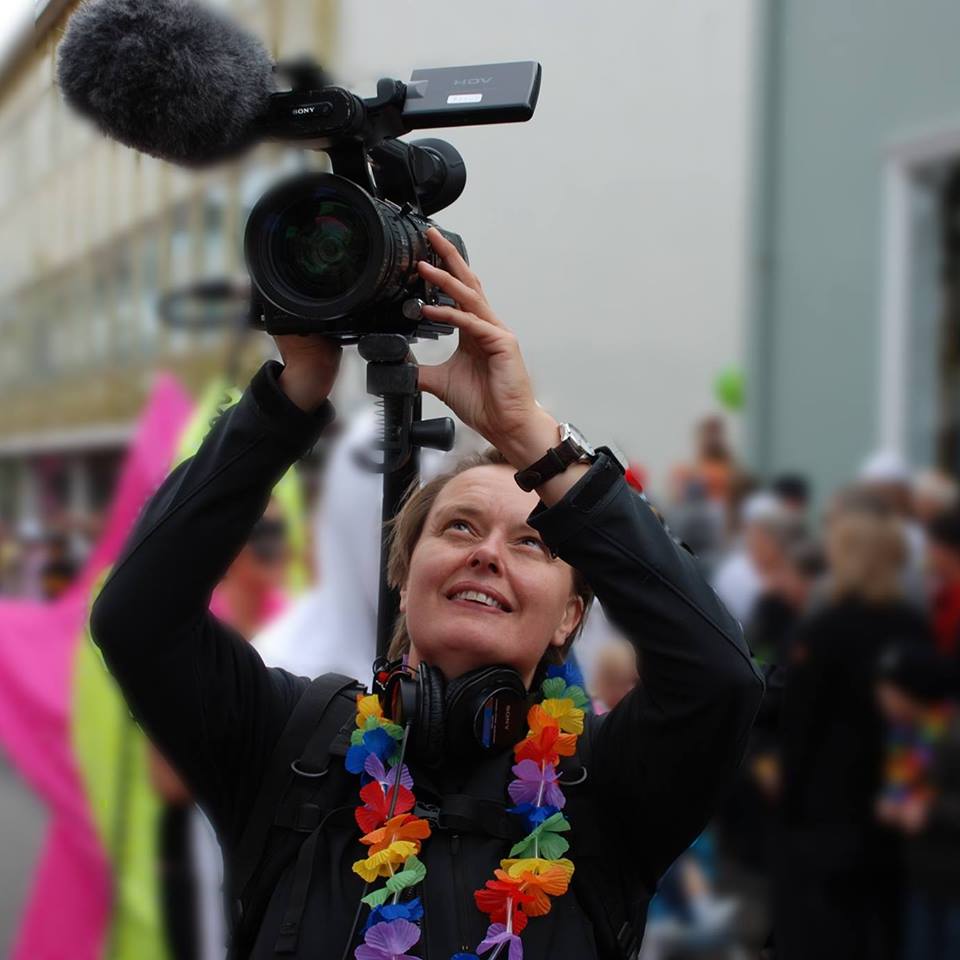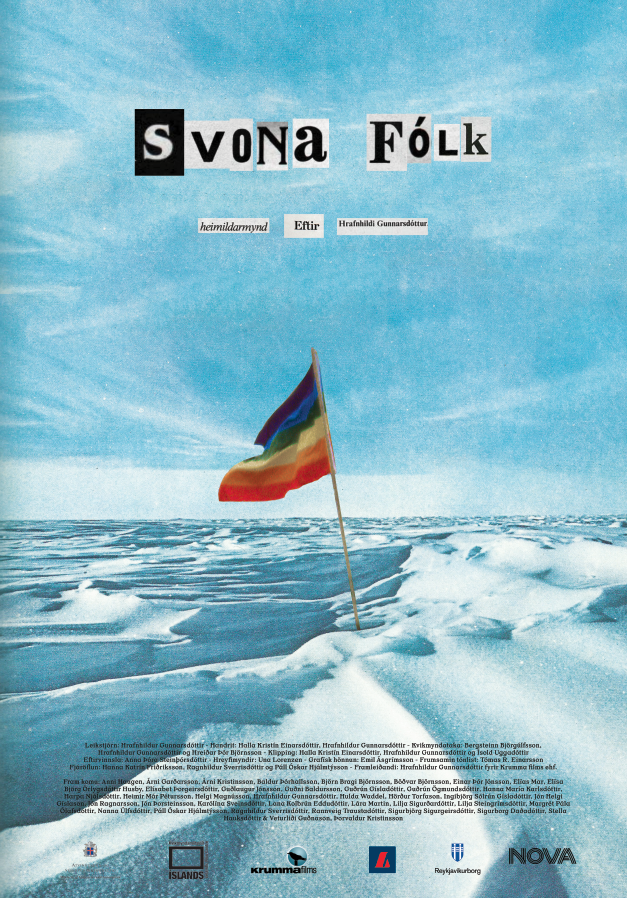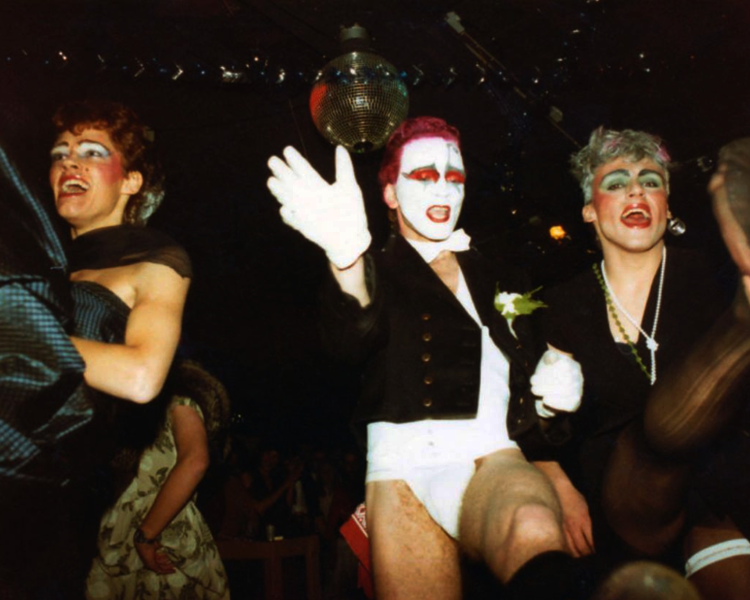People Like That (Svona fólk) – is a new documentary film by Hrafnhildur Gunnarsdóttir, which premieres at cinema Bíó Paradís tonight, Tuesday November 27th. The film documents the civil rights struggle of gays and lesbians in Iceland and how the public opinion towards them has shifted 180° in the last 40 years.

Hrafnhildur started documenting the scene 26 years ago, in 1992 when she interviewed a good friend who was HIV positive and awaiting death due to complications from AIDS.
“In 1992 we were in the midst of the AIDS epidemic and my friend Björn had come back to Iceland to die. We had both studied and lived nearby each other in San Francisco some years earlier. What prompted the interview were his stories about how some of the members of the gay community reacted to him as a HIV positive person. He told me he felt branded by a lot of the gay men and that the gay community was divided into the “clean” and “unclean”. What struck me so hard was the idea that on top of having to deal with the already very prejudiced Icelandic society he felt like an outcast from the gay community as well. Certainly there was also support but this was a dimension I had not thought about. To be diagnosed HIV positive at that time equaled death, so obviously there was a lot of paranoia within the gay community.”
“What is surprising is that people might think that the gay movement was a mass movement behind this battle, but the fight was fought by a handful, maybe a dozen of people over a period of 30-40 years.”
Hrafnhildur says that this interview with her friend, whose name was Björn Bragi Björnsson, opened her eyes for the necessity of preserving this history. She also became interested in following the struggle for civil rights as AIDS really made a profound difference and put gay people on the map. The horrible situation of AIDS became the silver lining for paving the way for equal rights. So she started documenting other people who were involved on a grassroots level in pushing for equal rights for gays and lesbians and gathering material for the film.
“I made this film in spurts,“ Hrafnhildur explains. „Started 1992, as I said, and then again in 1995, 1997 and 1999. I meant to finish the film in 2005 but then I was asked to run for chair of The National Queer Organisation, Samtökin ´78. I became the chairman so I had to put the film on hold for a while. It was actually a good thing that the film got postponed because the legal battle for equal rights was not finished til 2015 so I can include that in the TV series as this film now covers 1970-1985.”
Asked if there is a red thread through the film Hrafnhildur laughs and says that it’s hard to pinpoint one thing that has been most prominent in the battle.
“What is surprising is that people might think that the gay movement was a mass movement behind this battle, but the fight was fought by a handful, maybe a dozen of people over a period of 30-40 years,” she says.
Asked when things had really started moving forward in this struggle Hrafnhildur says that along the way there were a lot of tiny steps in the right direction however the big leap was taken when the law for same-sex civil union was passed in the parliament in 1996.
“That was a turning point! Who knew a marriage law would have this wide-reaching effect, but it did! The media also helped and I was really surprised how early it was positive, yes lots of negative stuff too!

In 1977 a few guys founded Iceland Hospitality and sent a statement of purpose to the press and almost all the papers published the statement. Only one of them was very negative. That paper was called The Monday Paper and was kind of a yellow press. It used the word “ kynvillingur” which might be translated as “queer”, before “queer” became a gay word, or “sodomite”. This word was commonly used by the press until the mid 80´s. We fought to be called lesbian and gay in the press and other words followed. The majority of the discussion was on a negative note in those years,“ says Hrafnhildur.
“That was the norm in almost all the papers, except maybe in the left-wing paper Þjóðviljinn.
The first bill of rights for gays and lesbians was put to the Parliament in 1985 but was put to sleep in some committee. In the beginning of the nineties things started moving when The Women’s Party (Kvennalistinn) took the matter under its wings and a parliamentary committee was appointed by the Althingi (parliament) with the purpose to examine the legal status of gays and lesbians in Iceland. This resulted in the law passed in 1996 for same-sex civil marriage.”
Hrafnhildur says that she herself never “came out” as a lesbian but that she had told her parents in 1980 when she was 16 years old. So the story she is telling in the film is to a large extend her own story?
“Totally!” she exclaims. “I framed the film with a personal touch, because I don’t want anyone to doubt that this story is told from my perspective.”
What is the biggest change in the status of gays and lesbian since the battle started?
“The biggest change is of course that in those 40 years we have moved from total silence to being included and totally visible in society without the horrendous consequences in the past. The silence that surrounded gays and lesbians in the seventies, to the spectacle of being gay in the 80´s and 90´s to not being newsworthy – non issue in the media today. It was clearly visible when Jóhanna Sigurðardóttir, former prime minister, came out as a lesbian and the Icelandic media didn’t cover that as big news. The foreign press was turned upside down, but here it was hardly mentioned at all. Nobody cared.”
Hrafnhildur does not however think that the battle is a thing of the past. She says it is necessary to be awake and be aware of how little it would take for things to go back to the old mode.
“We have to be alert all the time,” she says. “Even though we have in a sense reached the end of the road of the battle for equal human rights and the law has been changed to make us equal there is always the danger of a backlash. We see it clearly in the USA these days, and even though we could dismiss that as a sign they are not in sink with other western countries in these matters at the moment there are other warning signs. Even in the highly praised and exemplary human rights country Denmark there is a backlash going on right now. That’s a reminder of how vigilant we have to be.”
“Even in the highly praised and exemplary human rights country Denmark there is a backlash going on right now. That’s a reminder of how vigilant we have to be.”
But does Hrafnhildur think the battle is in fact won for gays and lesbians in Iceland? Lately the ban on gays donating blood has been under debate. Are there still battles to be fought for equal rights?
“I’m so old in this field,” she says with a laugh. “I really don´t understand why this has not been corrected as all donated blood is tested for HIV but then again for me this is not such a pressing issue since I think one day it will be corrected. However there are other more pressing issues such as laws about in vitro fertilisation and we need to have a discussion within the gay community about co parenting. We have seen instances of two gay and lesbian couples having a child together and we have to examine how best way to go about the legal process of that. Also the matter of surrogation is a big hush-hush here and we need to take that discussion in earnest in the next years.”
People Like That premiers tonight and will be shown in Bíó Paradís from Wednesday November 28th and later this winter a five-part TV series with the same name will air on national TV (RÚV). How is Hrafnhildur feeling about this product of hers finally becoming accessible to the public?
“I’m mostly hugely relieved,” she says and laughs again. “If I had realised back in 1992 that this would be such a long process I might have decided to have a child instead. But this film is in many ways a huge accomplishment and I’ve really done my best to try to cover the things that really mattered in this battle. But of course I’m also excited. The premiere shakes are always present when one is showing a new film. That does not change with age and experience.”


